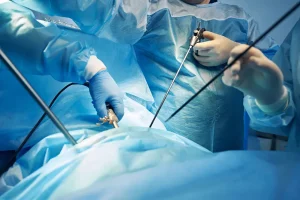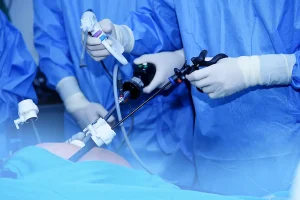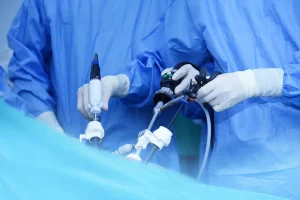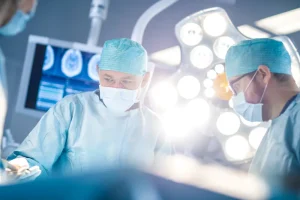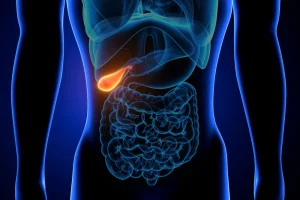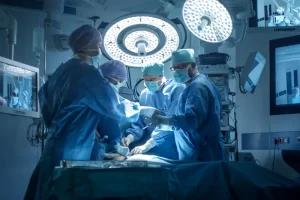Abdominal Hernia
Laparoscopic Appendectomy
Home » Laparoscopic General Surgery » Abdominal Hernia Surgery
Medical Procedures
Laparoscopic Interventions
Classic Surgical Interventions
Conditions Treated
Abdominal Conditions
- Gallbladder Disease
- Tumors of the Stomach, Liver, Pancreas
- Intestinal Pathologies
Pelvic and Perineal Conditions
Other Conditions Treated
- Thyroid
- Abdominal Lymphadenectomies
- Esophageal Tumors
Causes of Abdominal Hernia
Abdominal eventration occurs when the abdominal wall fails to heal correctly after surgery. This results in a defect that allows abdominal contents to push through. The primary causes include:
- Rupture of postoperative sutures
- Poor scar healing
- Weakening of the abdominal muscles
The Difference Between a Hernia and an Eventration
Understanding the distinction between a hernia and eventration helps guide treatment:
- An abdominal hernia forms spontaneously through a weak area of the abdominal wall and does not relate to past surgeries.
- Eventration is a postoperative complication at the site of a surgical scar due to wall weakening.
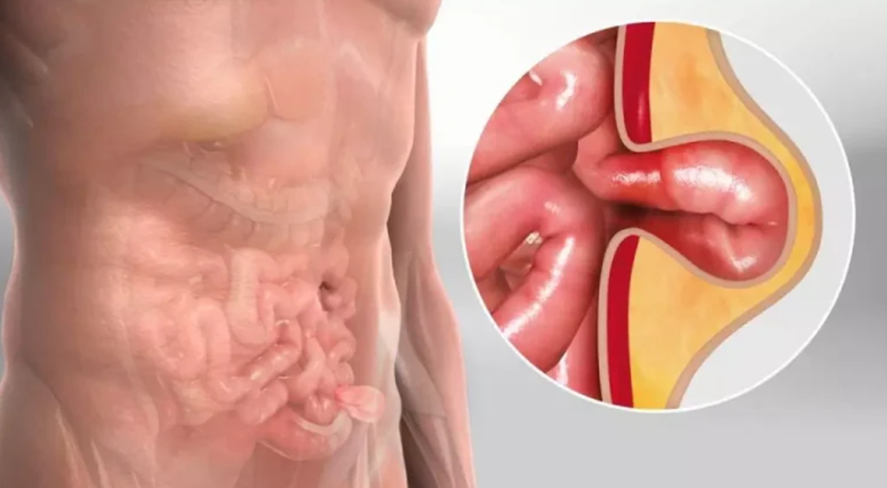
Abdominal eventration
Factors That Promote the Development of Eventration
Several risk factors can contribute to the development of abdominal eventration, such as:
- Strenuous physical activity too soon after surgery
- Persistent coughing, which increases intra-abdominal pressure
- Chronic constipation, causing continuous abdominal strain
- Postoperative infections that impair proper healing
- Obesity, adding excess pressure to the abdominal wall
Who Is the Abdominal Hernia Procedure For?
Surgery is recommended for patients with:
- A visible abdominal bulge that may enlarge over time
- Discomfort or pain during physical exertion
- Increased risk of complications such as bowel strangulation
Benefits of Abdominal Eventration Surgery
Surgical intervention provides several advantages, including:
- Relief from chronic pain and discomfort
- Lowered risk of serious complications like bowel obstruction
- Restoration of normal abdominal wall function
- Improved physical appearance and quality of life
Symptoms of Abdominal Eventration
Abdominal eventration can progress through different stages:
- Uncomplicated – A painless bulge at the scar site
- Incarcerated – A painful bulge that is difficult to push back
- Strangulated – Severe pain, vomiting, and signs of bowel obstruction that require emergency surgery
- Adhering to post-surgical instructions and reporting unusual symptoms promptly is essential.
When Is Surgery Necessary?
Surgery is the only definitive treatment for abdominal eventration. Early intervention helps prevent complications. Two main surgical approaches are:
- Laparoscopic surgery – Best for small and medium eventrations; involves minor incisions and internal mesh placement
- Open surgery – Required for larger or complex cases; performed through the original scar with mesh reinforcement
How Is the Procedure Performed?
Depending on the size and complexity of the hernia, surgery may be:
- Laparoscopic – Uses small incisions and a camera for guidance
- Open – Involves a larger incision to access and repair the defect
In both techniques, the surgeon reinforces the weakened area using sutures and mesh to prevent recurrence.
Eventration Surgery With Mesh
Mesh reinforcement strengthens the repair area and reduces recurrence risks. The mesh may be:
- Placed between muscle layers during open surgery
- Positioned within the abdominal cavity during laparoscopic surgery
This technique supports effective healing and faster recovery.
What Should Be Done After the Procedure?
Postoperative care is crucial. Follow these guidelines:
- Rest as advised by your physician
- Avoid heavy lifting and high-intensity activity
- Eat a balanced diet to avoid constipation
- Attend scheduled follow-up visits to track healing
Abdominal Hernia Belt
An abdominal belt provides support, reduces discomfort, and helps prevent hernia worsening before or after surgery. It is often recommended for additional external support during recovery.
How Long Does Eventration Surgery Take?
The duration of the surgery varies depending on the size of the eventration, the technique used, and whether complications are present:
- Laparoscopic surgery typically takes 1 to 2 hours and is faster and less invasive.
- Traditional surgery generally lasts between 2 and 4 hours, depending on case complexity and defect size.
Regardless of the method, surgical success relies heavily on the surgeon’s expertise and strict adherence to postoperative instructions.
Recovery After Traditional Hernia Repair and Laparoscopic Surgery
Recovery after hernia repair depends on the procedure type and the size of the defect addressed.
Recovery After Traditional Hernia Repair and Laparoscopic Surgery
- Hospitalization typically lasts between 3 and 7 days, based on case complexity.
- Postoperative pain may be more intense but is effectively managed with prescribed medication.
- Light activities can be resumed after 4 to 6 weeks, while strenuous effort should be avoided for at least 3 months.
- Wearing an abdominal belt is recommended to support the abdominal wall during recovery.
- Regular medical check-ups are essential to ensure proper healing.
Recovery After Laparoscopic Eventration Surgery
- Hospital stay is shorter, generally between 1 and 3 days.
- Pain levels are reduced due to smaller incisions.
- Most patients can resume normal activities within 2 to 4 weeks but should avoid intense physical activity for at least 6 to 8 weeks.
Why Choose the VenArt Clinic?
- Experienced Medical Team – Our specialists have years of experience in laparoscopic general surgery, with proven outcomes and numerous positive testimonials.
- Modern Technology – We utilize minimally invasive techniques, such as laparoscopic surgery, to ensure quicker recovery and reduced postoperative discomfort.
- Personalized Approach – Every patient receives a tailored treatment plan designed to meet their individual medical needs for a safe and effective experience.
- Comprehensive Post-Operative Care – From recovery guidance to close monitoring, we support you throughout the healing process and answer all your questions for peace of mind.
Schedule an Appointment Now!
If you’ve been diagnosed with an abdominal hernia, do not wait for complications to arise. Schedule a consultation for a safe and effective treatment plan. Fill out the form below or contact us by phone to arrange a personalized evaluation.
Our specialists will provide expert answers and recommend the best approach for your recovery, ensuring the highest level of medical care.
Frequently Asked Questions
When should I see a doctor?
If you have persistent abdominal pain or a noticeable bulge, consult a surgeon promptly.
What is abdominal hernia?
It is a condition where internal organs protrude through a weak spot in the abdominal wall, often at a prior surgical site.
What are the symptoms of abdominal hernia?
A visible bulge, discomfort, and in severe cases, vomiting and signs of intestinal blockage.
What causes abdominal hernia?
Weak abdominal muscles, physical strain, obesity, infections, and other surgical complications.
It is important to talk to your doctor to understand the risks and benefits specific to your situation.
How long does hernia surgery take?
Laparoscopic surgery takes 1–2 hours; open surgery can take 2–4 hours.
Is an abdominal belt necessary after surgery?
Yes, it supports the abdominal wall and minimizes the chance of recurrence.
Can I prevent a hernia after surgery?
Yes, by avoiding physical strain, maintaining a healthy weight, and following recovery guidelines.

